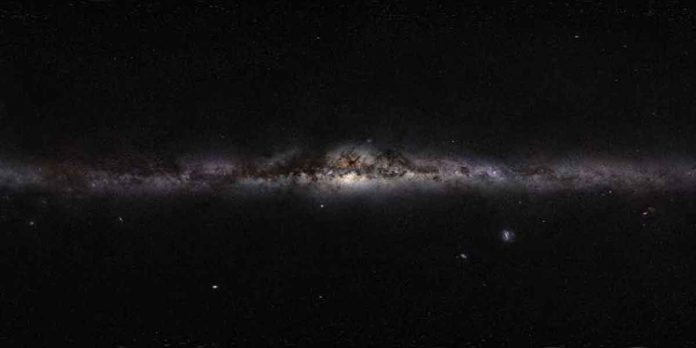An animated journey through the dusty Milky Way reveals the outlines of our galaxy taking shape as we look outward from Earth.
Astronomers have created an animation to model dust in the Milky Way using new data from an interactive tool that uses data from the European Space Agency’s Gaia mission and other space science data sets. The findings were presented at the National Astronomy Meeting (NAM 2022) at the University of Warwick this week and published in Astronomy & Astrophysics.
The animation depicts the accumulation of dust as seen from Earth’s neighbourhood to 13000 lightyears away from the galactic center—roughly 10% of the total distance across the Milky Way. Dust swirls all around, but as one moves further out, the concentration of dust along the galactic plane becomes clear. Two “windows” are also revealed, one above and one below the galactic plane.
“Dust clouds are related to star formation and death, so their distribution tells a story about how structures formed in the galaxy and how the galaxy evolves,” said Nick Cox, project coordinator for the EXPLORE project that is developing the tools. “The maps are also useful for cosmologists in revealing regions where there is no dust and we can have a clear, unobstructed view out of the Milky Way to study the Universe beyond, such as with Hubble or the new James Webb Space Telescope.”
The animation was created using data from the Gaia mission and the 2MASS All Sky Survey. The tools are part of a suite of applications developed with funding from the European Union’s Horizon 2020 Program to support studies of stars and galaxies, as well as lunar exploration.
“State-of-the-art machine learning and visual analytics have the potential to significantly improve scientific return and discovery for space science missions,” said Albert Zijlstra of the University of Manchester and the EXPLORE project.
“With a constant flow of new data, such as the recent third release of Gaia data in June 2022, we have an increasing wealth of information to mine—far beyond what humans can process in a lifetime. We need tools like the ones we’re creating for EXPLORE to help us with scientific discovery, such as characterising properties within data or identifying the most interesting or unusual features and structures.”

